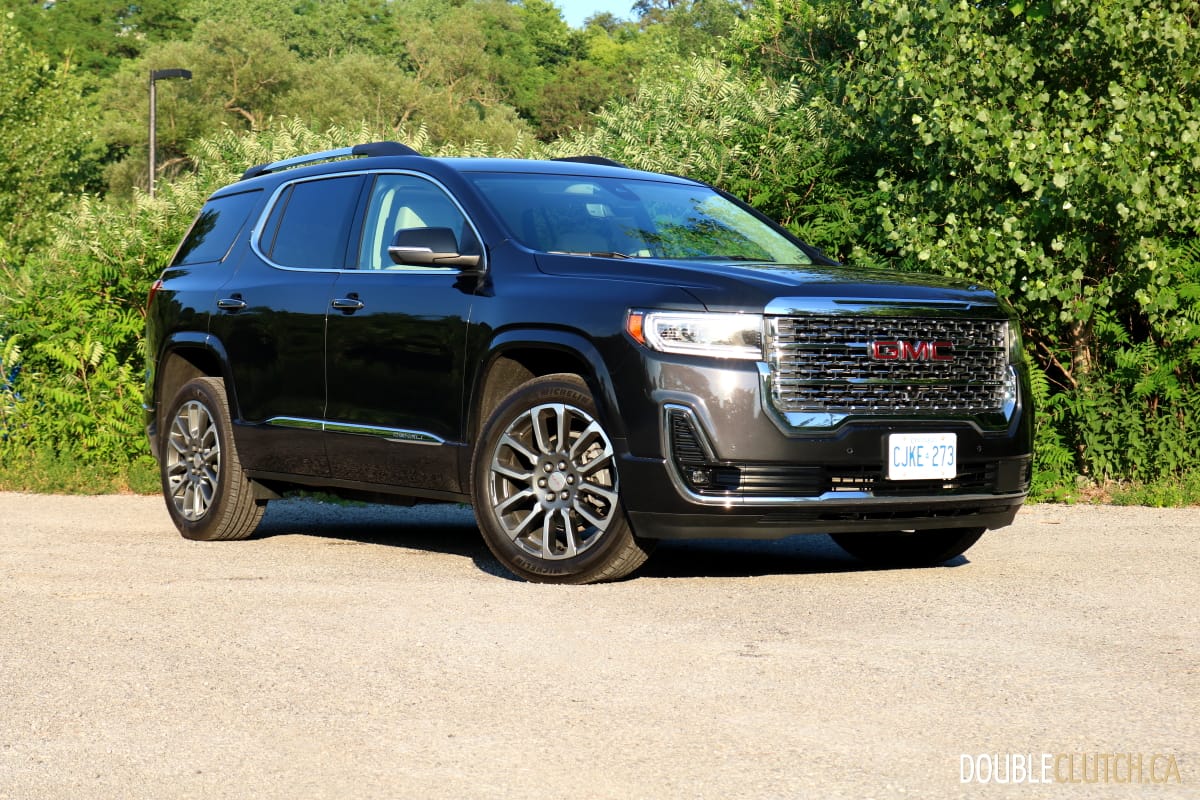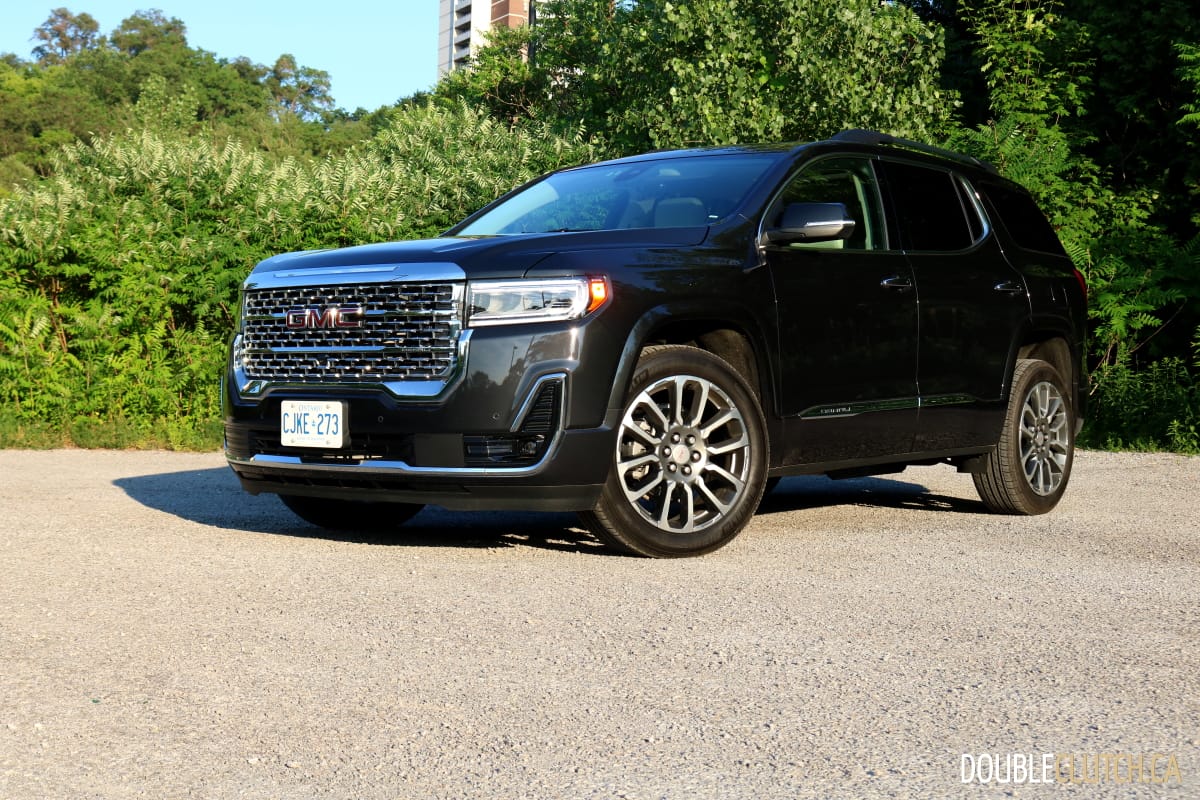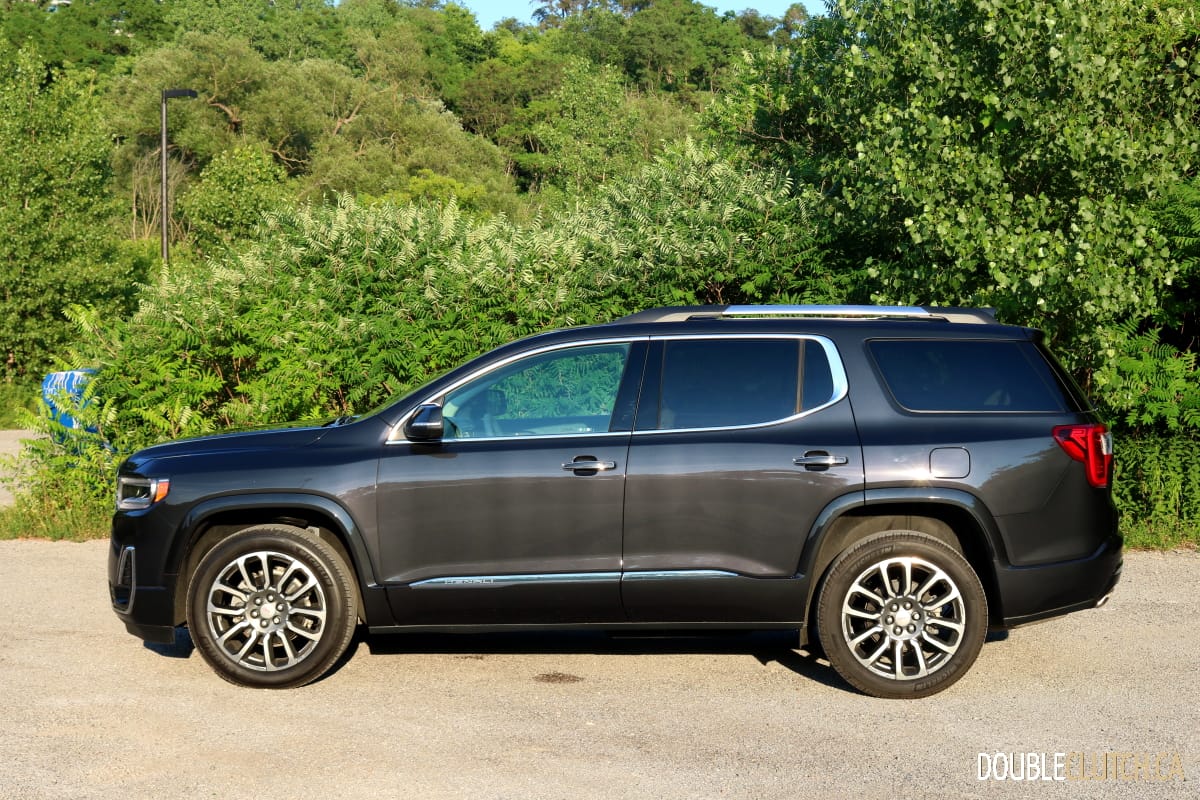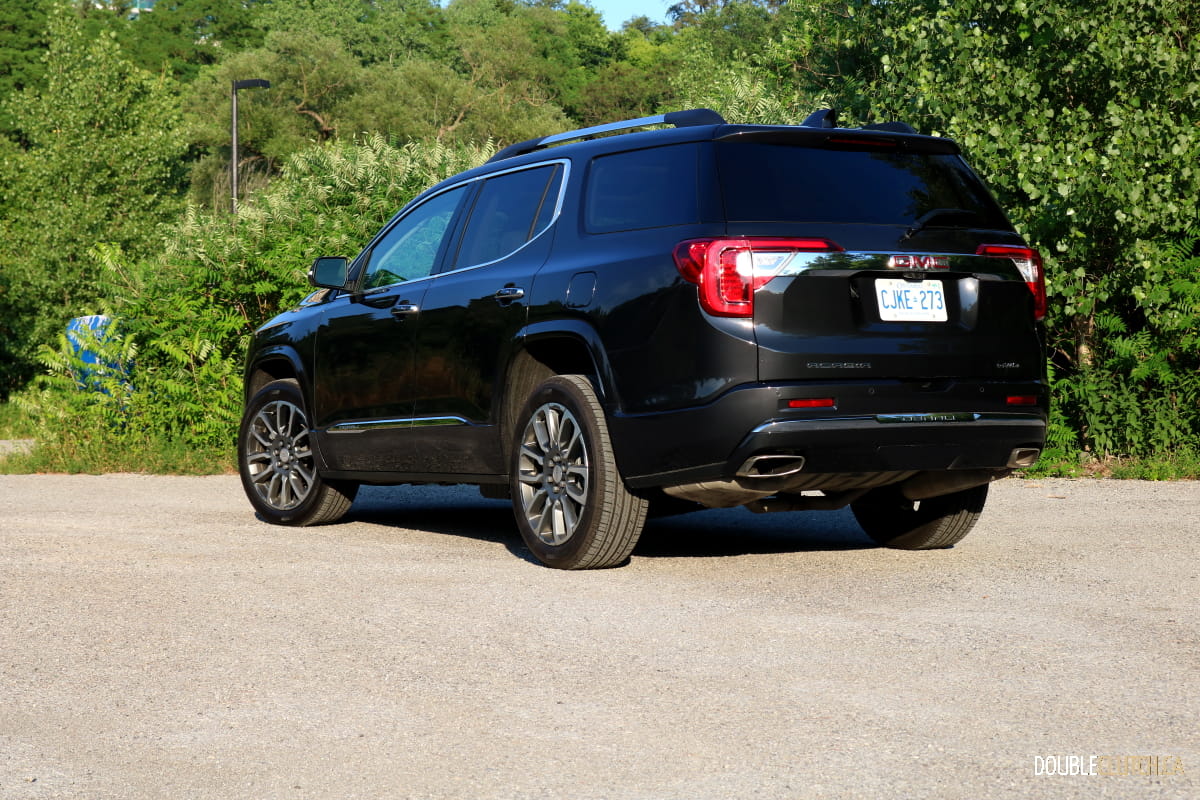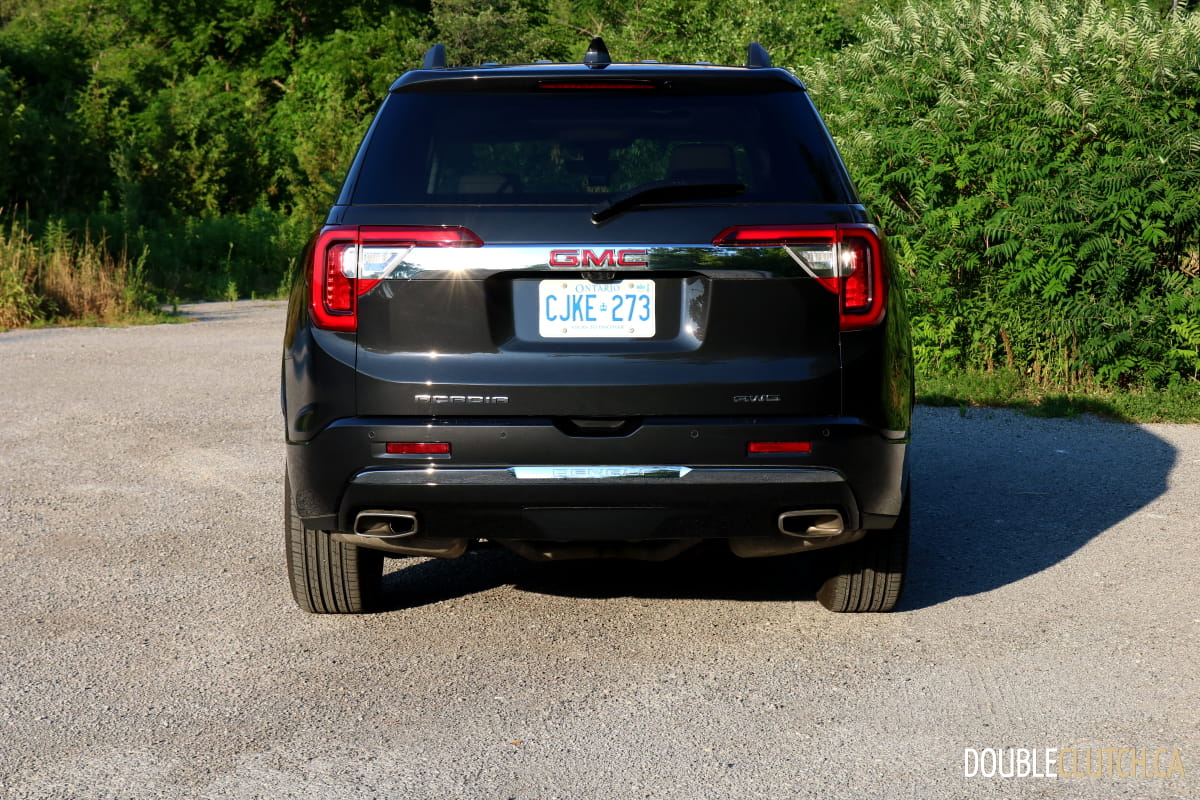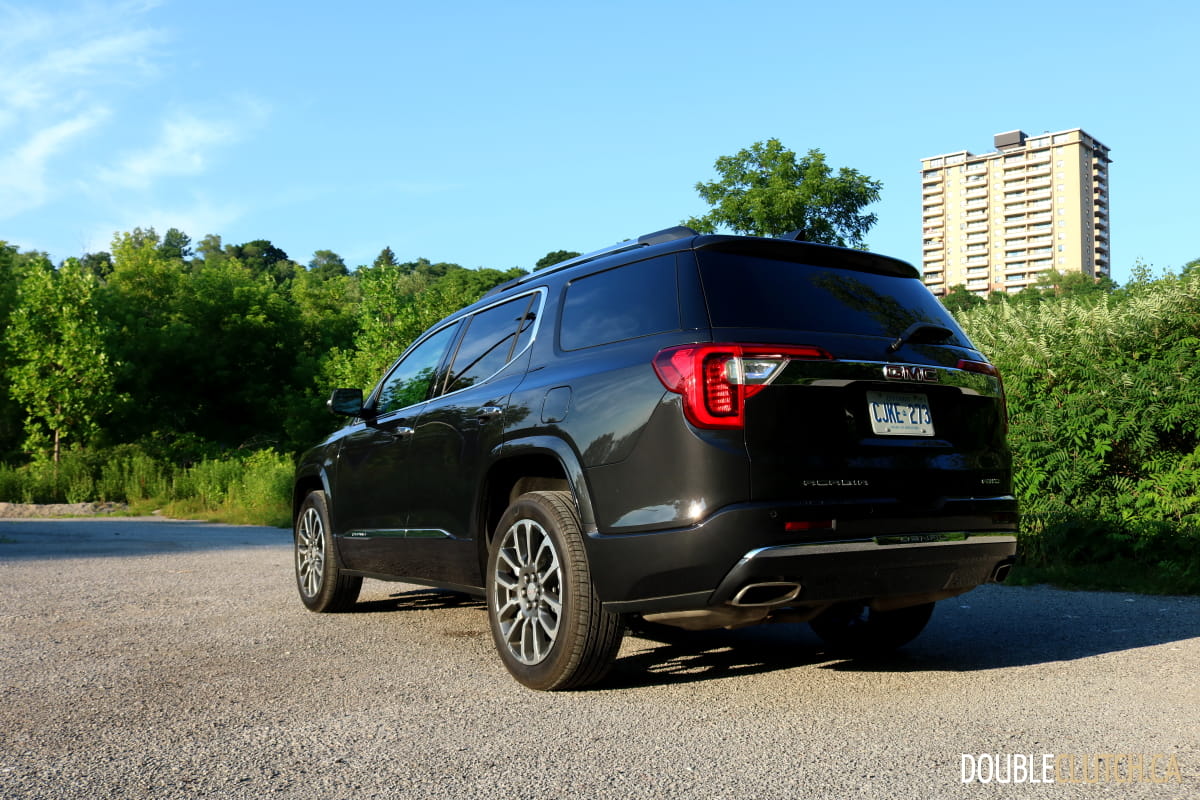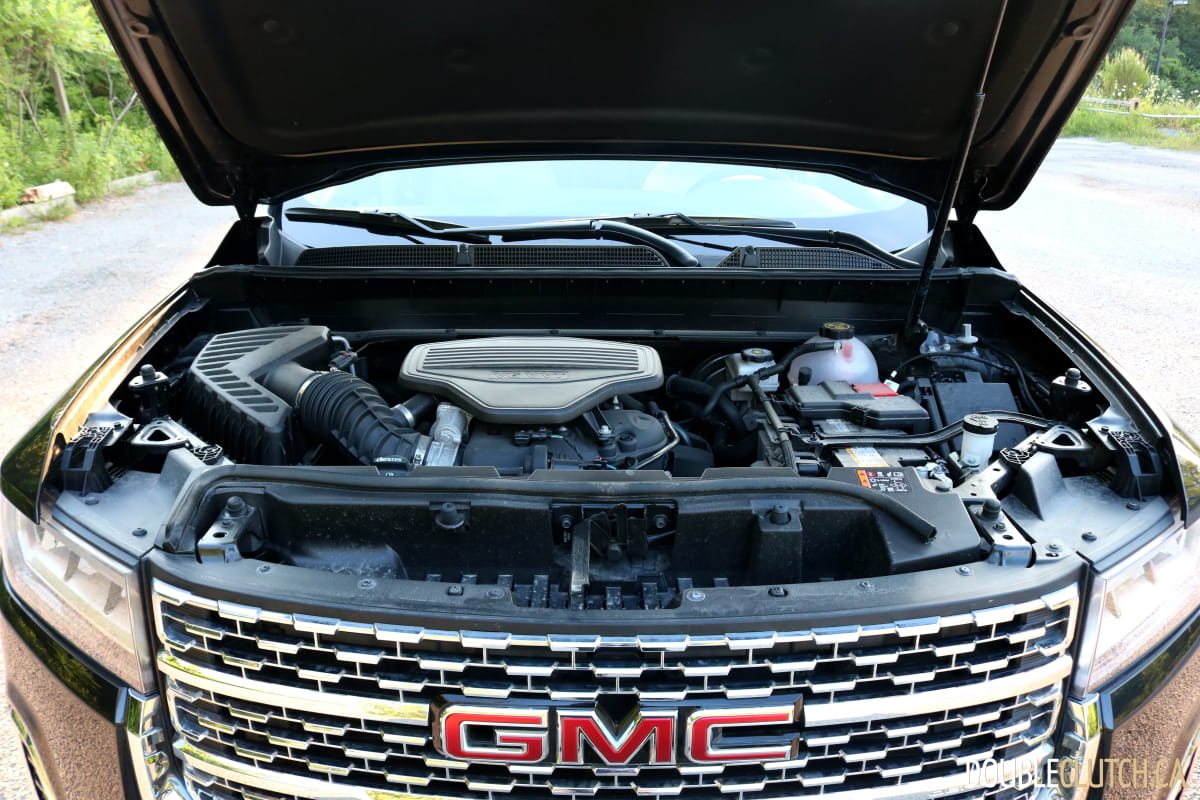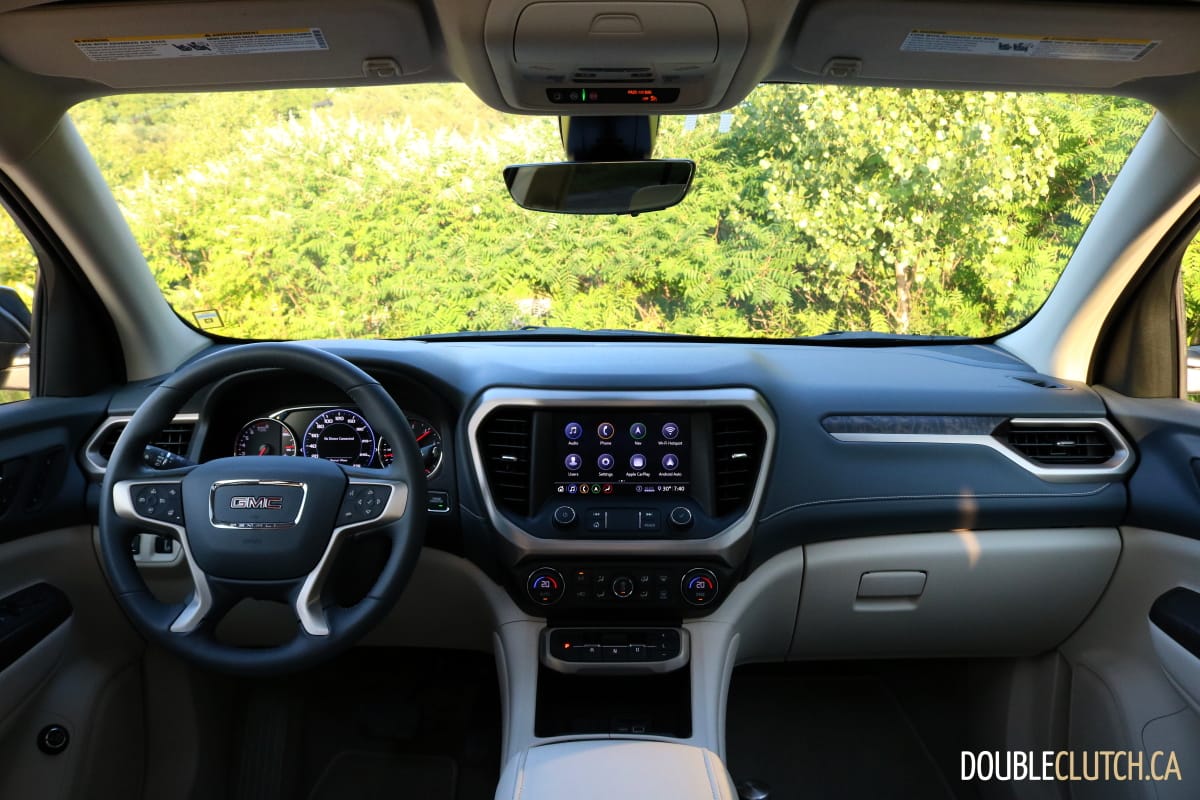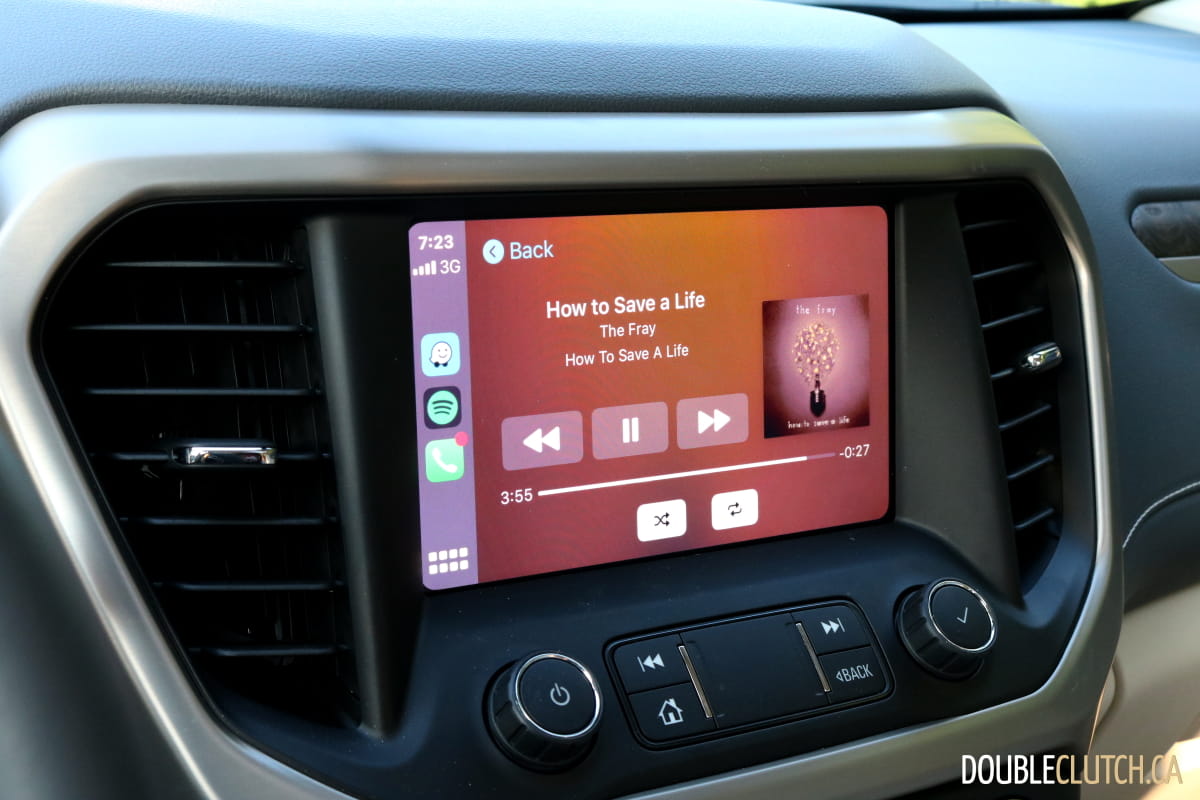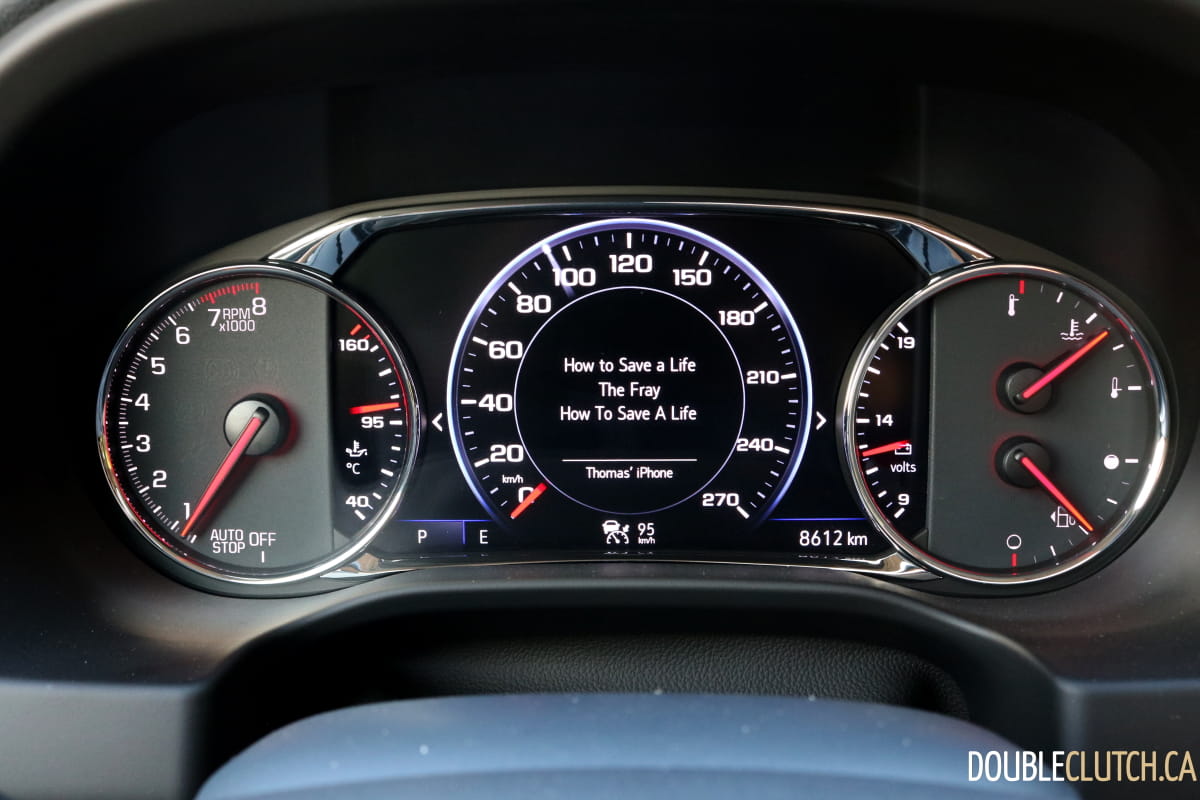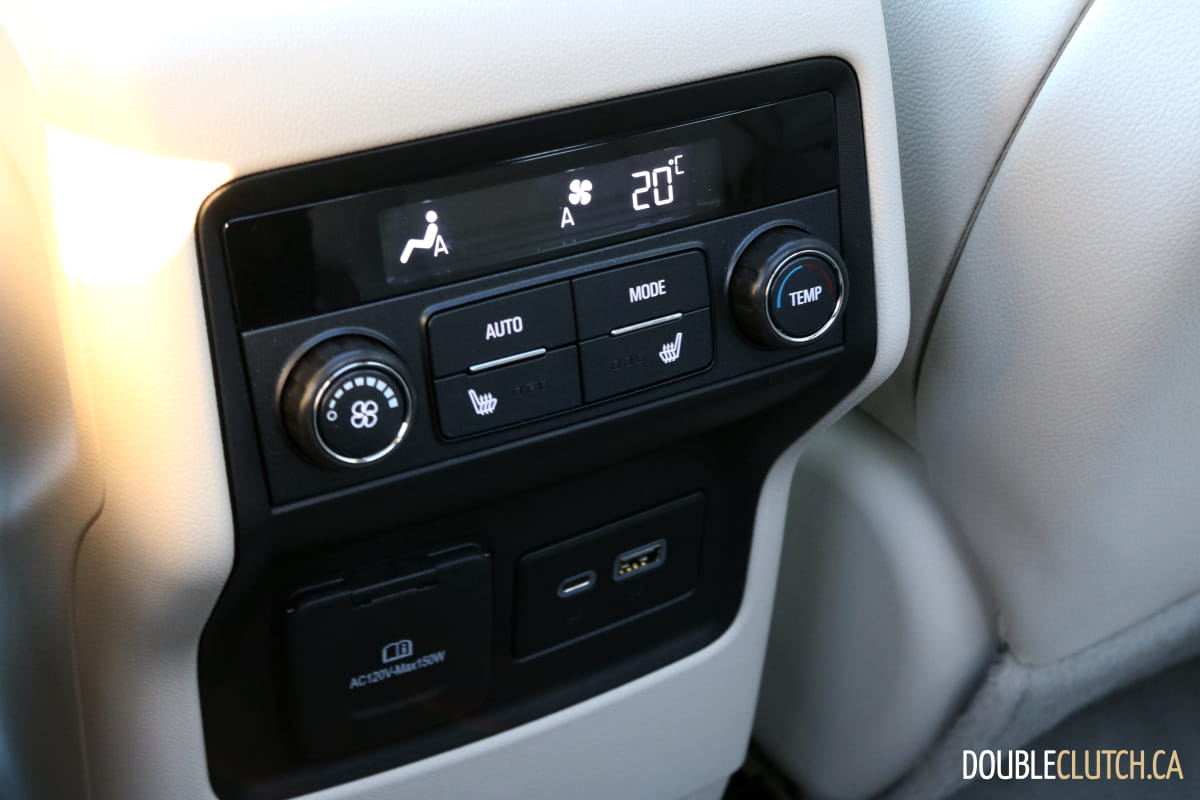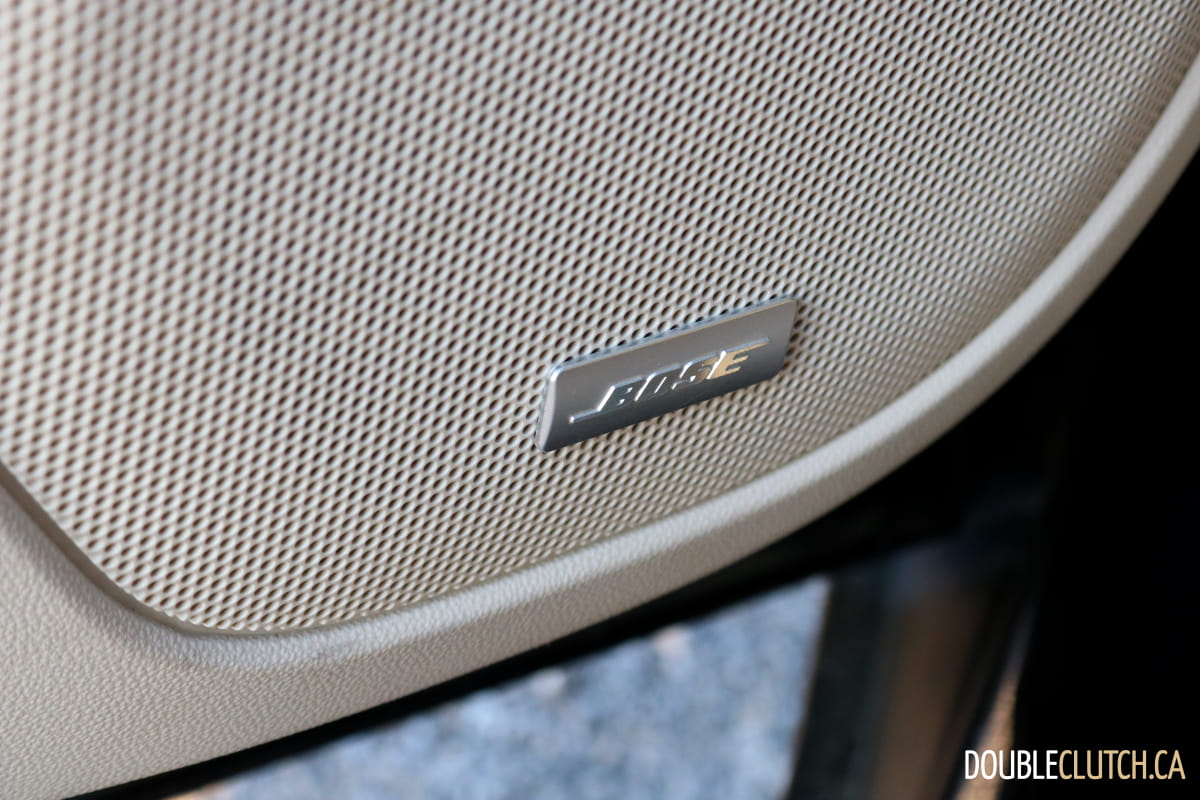Scaling down successful design attributes to fit a smaller chassis can often produce mixed results, and the 2020 GMC Acadia Denali is no exception. While the Denali’s signature mesh grille adds a healthy dose of negative space to help fix the bass-face on the regular Acadia, that’s not to say its styling isn’t without awkward bits. The main side character line actually pulls downward above the rear wheel which accentuates the c-pillar’s general awkwardness.
The windowline curves up at the back of the rear door only for the rearmost windows to not follow the same design and trim treatment. This combination makes the greenhouse look a bit clunky and unfinished. Significantly more enraging is the design decision to use the reverse lights as pathway lighting. It’s a great way to confuse and infuriate other drivers in parking lots and it would cost GMC zero dollars to just not do it.
That being said, there are areas where the Acadia Denali’s exterior design is quite successful. The squircle wheel arches are angular enough to instill a healthy dose of truck DNA in the design is perfectly proportional, adding visual width and really anchoring the rear end to the tarmac. Best of all, the Acadia makes a statement. The Denali name carries a certain gravitas earned as the chariot of choice for well-off Americans who prefer to steer clear of Cadillac’s ostentatiousness, so when a decked-out greyscale GMC SUV rolls up to the curb it likely means business.
On the inside, this particular Acadia Denali is clad in what GMC calls “Dark Galvanized/Light Shale” perforated leather. It’s a breath of fresh air compared to the dark, monotone colorways so pervasive in cars of today and the colour-matched carpet, while prone to soiling, is a lovely touch. Admittedly what would’ve been lovelier is if GMC took the money they spent on colour-keyed carpet and used it on better plastics. Everything below the hip point is quite hard and scratchy, the stitched surfaces on the dash feel less expensive than the inside of a loaded Kia Telluride (reviewed here) or Toyota Highlander.
The infotainment system is also a bit sluggish in Apple CarPlay mode, with Spotify and Waze crashing and freezing on multiple occasions during the testing period. The eight-speaker Bose stereo system offers up clean treble, smooth midrange and enough punchy bass to satisfy most consumers. Sound staging certainly isn’t on par with the JBL system available in the Toyota Highlander, but few systems in the class offer that sort of refinement.
In addition to the Bose stereo, there’s more to like about the Acadia Denali’s interior. The optional dual sunroofs have separate shades for the front and rear glass, allowing each of the first two rows to let their preferred amount of light in. The wireless charging pad is incredibly well-designed, with a downward angle and rubber bumpers to stop devices from moving about and convenient placement ahead of the cupholder. The centre armrest is wide, well-padded and mounted forward enough to be usable by most drivers, yet it doesn’t impede on console storage space or switch banks.
The steering wheel feels like a quality piece and the semi-digital cluster behind it is bright, crisp, easy to navigate and quite configurable. There’s also a handy bin beneath the main console for tissues, a purse or any other larger items a driver wishes to have easy access to. USB-A, USB-C and 12-volt charge points are accessible from the front row while second-row passengers can plug in via USB-A, USB-C or a household outlet. Overall interior room is excellent, with genuine seating for six adults and space in the hatch for more than just a single Twix bar with the third row up. Speaking of the hatch, there’s another 12-volt charge point back there and the second row can be dropped by pulling levers on the left side of the cargo area near the hatch – handy stuff.
The 2020 GMC Acadia Denali’s 3.6-litre V6 is a powerful and refined engine well-suited to this crossover’s mission. Packing 310 horsepower and 267 lb-ft. of torque, it builds power like a crescendo while remaining smooth and sedate in light-throttle applications. GM’s nine-speed automatic is remarkably suited to this engine with only the occasional harsh downshift under certain conditions in automatic mode. Manumatic mode was not played with during our testing period, chiefly due to its comical push button operation and an absence of paddle shifters.
The electronic shifter controls had virtually no learning curve although the button for park felt surprisingly cheap for such an often-used touch point. Steering is predictably vague, although given the Acadia Denali’s comfort-first engineering focus that’s unlikely to be an issue for most owners. Chassis rigidity is surprisingly crisp which helps the dampers do their job. In normal mode the available adaptive dampers are a touch underdamped, evoking shades of Buick Roadmaster over long, rolling road imperfections with waterbed-squishy secondary body motions.
Twist the drive mode to the right for sport mode and the dampers firm up, greatly improving the aforementioned body motions at the expense of some high-speed damping comfort. It’s a boon for countering motion sickness and unlikely to be too firm for most passengers. Steering also weights up in sport mode and the transmission programming changes to a crisper map. The only downside is that it disables the all-wheel-drive lockout which impacts fuel consumption. Wind noise is reasonably low for a vehicle roughly the size and shape of a downtown Toronto apartment but pronounced tire slap is present over freeway tar snakes.
The Acadia’s factory-fitted Michelin Premier LTX tires are generally regarded as fairly quiet so the weight of the standard 20-inch wheels is likely the culprit here. Another potential downside is fuel economy. Over our week of testing we averaged 11.7L/100km in highway-biased driving, slightly worse than the government’s official combined figure of 11.4L/100km and particularly disappointing considering how much of this driving was done with the all-wheel-drive system deactivated.
This particular Acadia Denali came equipped with GMC’s Denali Pro Grade Package, a $3,995 bundle of kit that really should come standard at this price point. It includes dual sunroofs, adaptive dampers, advanced adaptive cruise control, enhanced automatic emergency braking, GM’s gimmicky rear camera mirror and a surround camera system with a bewildering variety of views. Said advanced adaptive cruise control works extremely well, smoothly and seamlessly shedding and gaining speed in freeway traffic even with the following distance set to its closest setting.
Lane-keep assist also functions quite well, subtly adjusting steering to keep the driver from drifting out of their lane. Less impressive is the rear camera mirror, and here’s why. A quick eye glance in a normal mirror maintains the same focus distance a driver has when they look forward. The camera mirror removes all sense of depth and as a result is quite disorienting, requiring the driver to refocus on the road ahead when they’re done glancing. It was turned on once during the testing period and immediately turned off, never to be touched again. Another assist nitpick is that there is no separate hard button to cue up the parking camera system. Instead the driver must hunt through the infotainment system, an unnecessary step for such a commonly-used function.
At $58,078 as tested, the 2020 GMC Acadia Denali doesn’t represent the best value in the three-row crossover segment. However to many it’s a Labrador retriever on four wheels – stylish, familiar, friendly and ready for just about anything. The Kia Telluride provides a more upscale experience and the Toyota Highlander is a more stylish ride but the improvements made to the Acadia’s Denali trim may warrant a look, especially when compared to the aging Honda Pilot.
See Also:
2020 Hyundai Palisade Ultimate









